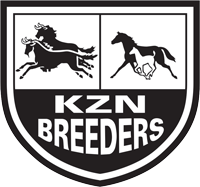|
Physitis is a developmental condition seen in young, rapidly growing horses, leading to visible enlargement of the growth plates, often accompanied by heat and pain over the swelling as well as varying degrees of lameness. (“Physis”=growth plate + “itis”= inflammation). Growth plates are the areas on the ends of long bones of young horses from where the bones grow or lengthen.
Basics of bone formation:
The growth of long bones occurs at a highly specialised region at one or both ends of the bone, called the physis. When a foal is born, most of the skeleton has ossified (turned to bone) with cartilage remaining at the site of the growth plates to allow for further growth in length.
Gradually the bone matures and replaces the cartilage in a process known as endochondral ossification. This leads to lengthening of the bone and so the horse grows in height and is able to carry its increasing weight. The growth plates mature and close sequentially from the ground up, with the most active, the distal cannon bone (just above the fetlock) closing at approximately 4 months, and the distal radius and tibia (just above the knee and hock) closing at 18 to 20 months.
Most long bone growth is complete by 2 years of age. The rate of ossification is dependent on the load placed onto the limb (physical activity and weight) as well as nutritional factors. A fine balance must be maintained to ensure the correct rate of bone formation.
Decreased activity causes weaker bone to be deposited and increased activity will cause stronger bone to be formed, unless the increased stress occurs too abruptly. Abrupt increases in weight or activity will find the physis unprepared and the bone will be overloaded, leading to micro-instability and pain. The physis reacts by laying down secondary bone (“callus”) in an attempt to strengthen the bone, resulting in the typical bony swellings. An understanding of the process of bone formation greatly helps us to understand how and why physitis occurs.
What causes physitis?
Physitis is a multifactorial syndrome with managemental, physical and infectious causes.
- Overnutrition (rich young pasture or high grain feeds) leads to rapid weight gain which overloads
- Physical causes include direct trauma to the growth plate, excessive exercise, or secondary
- Infectious physitis occurs when there is a bacterial infection present in the growth plate, either
the newly maturing physis. This is the most common cause of physitis. Undernutrition
means that the building blocks needed to create new bone are not available (especially calcium).
trauma from unbalanced weightbearing or poor conformation. For example, a foal with a
contracted tendon or other lameness in one front limb may present with physitis in the opposite
limb due to the increased weight load on the “good” limb.
directly from a penetrating wound or via the bloodstream in a septicaemic foal. The physis is
predisposed to bacterial infection due its very convoluted blood supply; bacteria tend to “sludge”
in the blood vessels and subsequently infect the surrounding bone.
What are the signs?
The most common sites for physitis are the distal cannon (just above the fetlock), the distal radius (just above the knee) and less commonly the distal tibia (just above the hock). Due to the stage at which these physes mature, signs are typically seen in the fetlock region from 3-6 months and the knee from 8 months to 2 years.
How is it treated?
The treatment consists of addressing the primary cause and preventing any secondary damage or permanent angular limb deformity. The length of treatment required varies with the severity of the physitis but is generally between 2 weeks and 2 months.
Treatment includes:

- Exercise restriction (but not total box confinement as some stimulation is needed to mature the
- Reduction of body weight and particularly a reduction in the energy content of the diet should be
- Regular (2 weekly) balancing by a farrier – very slight rasping is adequate.
- Non-steroidal inflammatories (Metacam, Bute)
- Correction of any underlying angular limb deformities
- Infectious physitis requires intensive antibiotic treatment systemically and locally.
- Firm, warm, and sometimes painful
- Varying degrees of lameness, from mild
- Flexion of the affected joint may be resented
- The fetlock conformation may become more
- Radiographs/X-rays show thickening of the
growth plates). For example: either small paddock rest, or box confinement with short periods of
paddock exercise (1-2 hours at a time).
made. The diet should have the correct calcium/phosphorus balance as well as adequate copper
and zinc.
enlargement of the growth plate, most often
medially (on the inside of the limb),
sometimes giving joints an “hourglass”
appearance.
stiffness to overt lameness.
upright and the fetlocks and knees may
deviate outwards, as the foal tries to bear
weight on the outside of the hoof (to alleviate
pain coming the inside of the limb). If a foal
starts to “go bandy” after having previously
normal conformation, consider subclinical
physitis and treat it accordingly.
physeal cartilage and callus formation.
The typical hard
swellings in a recent
physitis weanling
An X-ray showing
physitis of the distal
radius (Just above
the knee joint)
What is the prognosis?
Physitis is a self-limiting disease which resolves when the growth plates close. Provided that no secondary limb deformities have occurred, the prognosis is good.
Bosch Hoek Equine Hospital is a state of the art Equine hospital situated in the beautiful Kwa-Zulu Natal Midlands of South Africa. Our primary goal is to offer clients and their horses world class care and expertise for both surgical and medical conditions with a rehabilitation centre to match.
If you require our services or would like to discuss anything please call one of us on the numbers below:
Dr Helen Tiffin 082 966 9324
Dr Jenny Lawrence 082 836 9897
Dr Anna Bowker 082 849 3456
Dr John Hodsdon 072 165 7122


